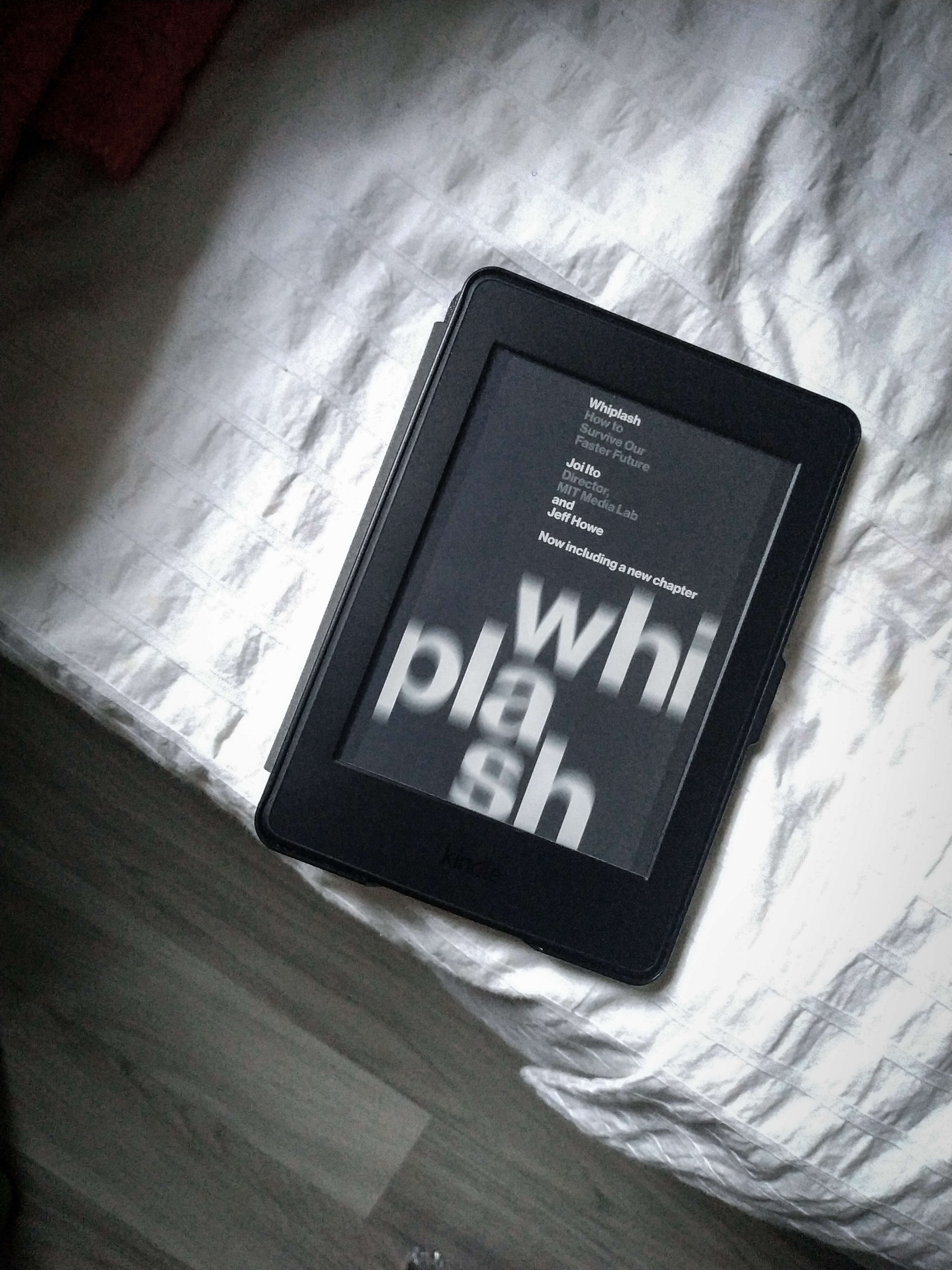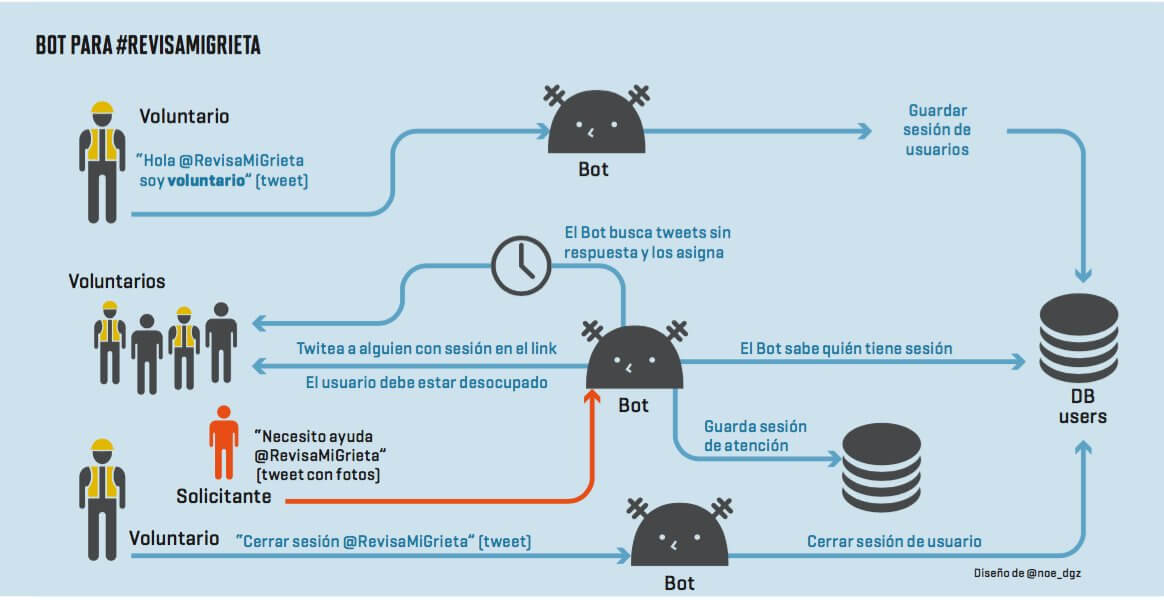In 2013, Puebla was flirting with an idea in innovation and design: applying to the UNESCO Creative Cities Network. For several years, together with the municipal government of Puebla, civil society, academia, and industry, we worked on creating a Roadmap. Several projects were defined that could successfully nominate Puebla within a select group of cities seeking to foster creative potential.
However, Puebla is a capital that is still defining how to use technology to its advantage. In the working groups, according to industry, it has been proposed that technology and design be used to boost the automotive, textile, and materials industries. However, today technology has shown us that it can be in any industry and can also change our daily lives.
Who makes Art Media and how do we use it
One of the academic development hubs I admire most is the MIT Media Lab. It’s a place where earning an Arts degree requires the use of engineering to develop new academic topics. Although it might seem that interdisciplinary projects happen there, Joichi Ito—the director—defines it more as a place where antidisciplinary projects happen. Students and professors not only collaborate between disciplines, but explore the space between them and beyond. Currently, the lab is defined as a place where projects occur at the intersection of technology, media, science, art, and design; where the world of computing is not just about computers, but about adapting them to our lives, as they are everywhere. Today, through them, we deliver and receive messages; they are a means of communication.
Technology as a coordinator of new citizen organization
Social networks and the internet have proven to be useful technological platforms for creating new forms of citizen organization. They have democratized information and positioned themselves as a new means of organization. At the same time, we witness some challenges and phenomena that can enable the scaling of citizen cooperation. They have taught us new ways of organization and governance. A good example of organization through technology is how we responded to the September 19, 2017 earthquake. Mexico organized itself through its citizens in an exemplary way. An interdisciplinary collaboration group among computer scientists, technologists, architects, engineers, data analysts, journalists, and citizens helped ensure recovery and response to earthquake damage happened in a matter of minutes.
With technology, groups and tools emerged focused on resource distribution, fact verification, work organization, risk assessment, among other solutions. Exemplarily, we used it to distribute resources in a new way, which exceeded the capacity of our Government. In terms of governance, citizens and Government have created new channels of communication and accountability. The availability and right to public information have made possible a new dynamic for decision-making and communication between both.
Technology can be transformative, but our cities move in the opposite direction
We could say we take advantage of technology by connecting an isolated person with others and with resources and information. Technology can be binding and promote autonomy. An example of how it can help connect is the Tinder dating app, as MIT Technology Review reported that it has connected disconnected people and increased interracial marriages1. At the same time, we have a technological response to create a decentralized financial system through blockchain technology and Bitcoin2. Electronic currency has enabled the creation of a decentralized goods and services market that also allows transparency in transactions. All Bitcoin users are subject to autonomy and transparency by default.
However, when we analyze life in our metropolis, we find that our city moves in another dynamic, contrary to what transformative technology promotes. For example, the city segregates its inhabitants through housing developments where elite suburbs and others of social interest have been created. Thus, bubbles with different and foreign realities have been generated, which limit political activity and marginalize. We can also say that the great distances between work centers and housing centers prevent citizens from having autonomy in the use of their time, as they must use it to travel from home to work, which prevents them from using it for their own development and that of their community.
Citizen technology for democracy
A desirable goal for which we can use technology towards the year 2031 is to extend the potential of citizens in transforming their environment. We can use informational tools to extend their understanding and help them make more informed decisions and create new meaning in decision-making about their lives and their community. The use of public and open data extends understanding of what happens, about budget execution, and helps with reflection and collective decision-making. In the future, the use of technological platforms will enable new online voting for a more participatory, liquid, and effective democracy: participatory because citizens can be consulted more frequently about issues that matter to them; liquid because new mechanisms of democracy with vote delegation will be created.
Thus, in a liquid democracy, citizens, depending on the votes and the election, can delegate their vote to someone they trust. If the citizen trusts someone to vote for them in park referendums, they can do so, another for water infrastructure, and so on. Through electronic platforms, the best features of representative and direct democracy can be combined.
The art and its purpose in technology
Technology and art have created a very dynamic combination through new formats that go beyond classical arts. Despite this, art itself continues to shake and sensitize people; it creates diverse activations and new spaces. Technology can serve to declare a change or create awareness in people. In this way, art with a message, through technology, can provide autonomy and not dependence on a control tool.
Sometimes we glimpse that technology is making us prisoners of a predefined way of life, which watches over and follows our every move. It is true that this happens, but at the same time, it can be a vehicle to carry impactful messages for social transformation. It is increasingly important to define the space of what happens in the digital plane and in our daily life. Both realities can enable collective consciousness and cooperation. However, it is pertinent that this medium remains neutral, free, and open. It is our responsibility to safeguard the privacy of our lives and the freedom of expression.
Towards 2031, other technologies such as 3D printing, virtual reality, and augmented reality will serve as a means to make heritage sites in our city more accessible. We will be able to generate replicas of spaces and characters that transport us to other times; create characters and avatars that intervene in cyber-physical spaces, where reality and virtual space converge in different forms. The above through virtual visitors, new sensory experiences, and even sensors connected to our brain.
David Eagleman, a professor of neuroscience at Stanford University, has studied the phenomenon of sensory substitution. He says we can have a sensory model similar to what Mr. Potato Head experiences in Toy Story. In this way, we can connect and disconnect the senses to our brain, changing their place, and they should function the same way, as the brain can interpret them from any position. Our senses are limited to a small sensory spectrum to which our brain is adapted. Similarly, it would adapt to using other senses if we enhanced them or improved their capabilities. They can even be more than local senses; they can be senses augmented by sensors outside our body. Thus, if we connected the weather to our body, we could develop a conscious sense of the weather, or sensitive, for example, to the stock market.
The horizon, towards the 500 years of our metropolis, seems far away, but in reality, the technology that is here today will impact in a decade. This will happen as we set out to develop projects that improve our metropolis. Therefore, we should work to find our own solutions and use our own philosophy for creating tools, in order to be responsible and create the technology we need, and use art and design as vehicles for development in our own reality. Let’s use our imagination as the middle ground to materialize our reality through rationality. Two thousand thirty-one, we will be there soon.
References:
[1] First Evidence That Online Dating Is Changing the Nature of Society
[2] Bitcoin: A Peer-to-Peer Electronic Cash System
Published in: “The City of Puebla towards its 500 years.” 15.6 Art Media: From Historical Heritage to the Digital Era.

